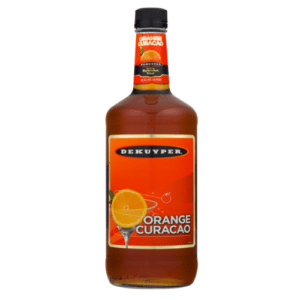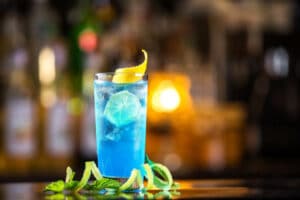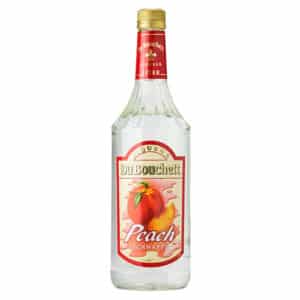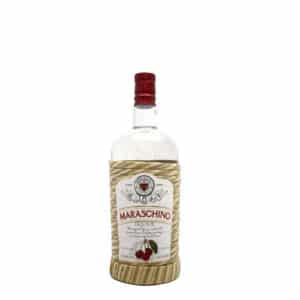Amaro Nonino is a popular Italian alcoholic liqueur that is used in cocktail making and bartending all around the world.
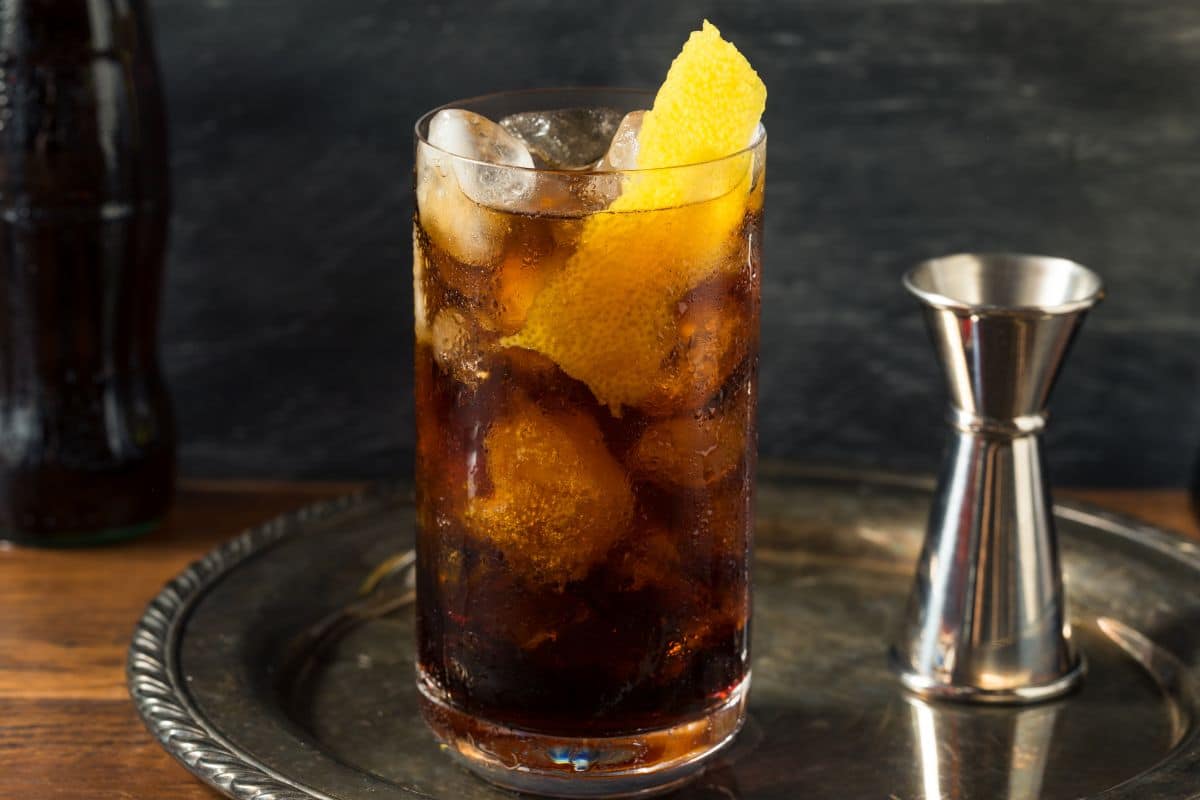
Used within mixology, as well as an after dinner digestif throughout Italy, the liqueur remains popular to this day.
However, if you happen to find yourself all out of Amaro Nonino, there are many viable substitutes you can choose from, including Gammel Dansk, Chartreuse, Bonal Gentiane Quina, as well as the various other types of Amaro that are available.
Below you can see a comparison table that shows the specific information regarding each alternative item:
| 100ml of | Calories | Fat | Carbs | Protein | Fiber |
| Gammel Dansk | 305 | og | 0g | 0g | 0g |
| Chartreuse | 300 | 0g | 0g | 0g | 0g |
| Bonal Gentiane Quina | 300 | 0g | 0g | 0g | 0g |
| Amaro Averna | 327 | 0g | 0g | 0g | 0g |
| Amar Meletti | 300 | 0g | 0g | 0g | 0g |
| Angostura Bitters | 263 | 0g | 0.2g | 0g | 0g |
| Vermouth | 144 | 0g | 15g | 0g | 0g |
| Amaro Tosolini | 200 | 0g | 0g | 0g | 0g |
| Cynar | 200 | 0g | 0g | 0g | 0g |
| Ramazotti | 200 | 0g | 0g | 0g | 0g |
What Does Amaro Nonino Taste Like?
Known as ‘little bitter’ – as taken from its Italian translation – Amaro Nonino is considered to be fruity tasting, with notes of citrus and mango, as well as somewhat spicy and botanical, with flavors such as allspice, pepper, and liquorice all being attributed to the drink.
As well as this, other common flavors attributed to Amaro Nonino include: fennel, star anise, honey, caramel, vanilla, and cocoa – all of which add to the complexity of the drink, and help make it such a versatile ingredient with such limitless potential in the fields of cooking and mixology.
One thing that really sets Amaro Nonino apart from other similar drinks is its sheer uniqueness – with flavors described as being more polarizing than most cocktail making ingredients.
However, the legion of fans suggest that, for many, Amaro Nonino remains a great tasting, popular drink consumed by many in the way of cocktails and digestifs.
Amaro Nonino Nutritional Value
100 grams of Amaro Nonino contains:
- 400 calories
- 0 g of fat
- 0 g of carbs
- 0 g of protein
- 0 g of fiber
Amaro Nonino Substitutes
Now that we know a little more about Amaro Nonino, and the nutritional information you ought to be aware of, it is now time for us to look at the seven best substitutes you can find on the market.
These include:
- Gammel Dansk
- Chartreuse
- Bonal Gentiane Quina
- Amaro Averna
- Amar Meletti
- Angostura Bitters
- Vermouth
- Amaro Tosolini
- Cynar
- Ramazotti
Gammel Dansk
This extremely popular bitter is produced in Denmark, where it comes in numerous varieties and flavors.
The original flavor, which is the subject of this section, contains around 29 different herbs and spices, making it an equally complex and alluring substitute for Amaro Nonino.
While the flavor can be similarly difficult to categorize, it is generally considered that Gammel Dansk has flavors of cinnamon, star anise, liquorice, ginger, and Seville orange.
It also has distinctly fruity undertones, which perfectly compliments the spiced, bitter flavoring, and creates an aromatic and complicated ingredient.
Known for its distinctly golden brown coloring – very similar in fact to Amaro Nonino – this is the perfect substitute for Amaro Nonino, and can be a great addition to cocktails.
This also means that it will not be noticeably different in terms of color – something that is important for the appearance of a professional cocktail.
Chartreuse
Much easier to find than Amaro Nonino, this French liqueur is one that most people will have probably seen in their local supermarket, and as such can be a great substitute when making cocktails and beverages.
Available in a variety of flavors and colors, the standard variety is characterized by a distinctly golden yellow color, and a complicated, herbal flavor that is reminiscent of Amaro Nonino itself.
The flavor is distinctly botanical and herbal, making it slightly more pungent than Amaro Nonino, and it also has a somewhat earthy aroma and taste.
There are actually two kinds of Chartreuse – green and yellow – and these are characterized by their respective colors, as well as their alcohol contents, with green chartreuse having 15% higher abv than yellow.
Bonal Gentiane Quina
A popular liquor with a fortified wine base, Bonal Gentiane Quina is infused with herbs and spices to create a deeply aromatic, complex flavor palette that really lends itself to cocktail making.
With a very dark, burnt brown coloring – sometimes olive green – Bonal Gentiane Quina has a similar flavor palette to Amaro Nonino, incorporating such flavors as liquorice and citrus, as well as an intense and delicious cherry flavoring that really makes it stand alone.
For this reason alone, the drink makes a great addition to cocktails, where it can inject a complex burst of intensity into any concoction – completely enhancing and enriching almost anything that it touches.
Amaro Averna
Another popular bitter, albeit one that is notably more fruity and sweet than the others on this list, Amaro Averna is commonly used throughout the Mediterranean, and features in some of the most popular cocktails in the world.
With a thicker, almost syrup-like consistency, Amaro Averna is both similar and different to Amaro Nonino – serving the same purpose with its complex flavor palette, but also creating a more delectable feel with its texture and consistency.
Amaro Averna also has a much lower alcohol content than the other bitters on this list, meaning that it is a more suitable choice for making punch and other communal alcohol beverages – wherein there is a need for lower alcohol to cater to everyone’s tastes.
Alternatively, this is also a great substitute for those looking for a lighter daytime cocktail, without the associated strength of the other contenders on this list.
Amar Meletti
Another member of the Amaro family, Amar Meletti is characterized by its closer similarity to Amaro Nonino – taking caramel and spices to create a recognizable complexity that fans of Nonino have come to love.
Strong tasting and notably herbaceous, Amar Meletti is much more of an acquired taste than the other Amaro on this list, and is known for having a much higher alcohol content – standing at 32% abv.
Angostura Bitters
There are perhaps the most common form of bitters on this list, and they feature heavily in modern cocktail making – at least on the more accessible levels that you can find in your local bar.
These are also easy to get ahold of, and relatively cheap to purchase, meaning they make a great substitute for those looking to experiment with mixology in the comfort of their own homes.
There are also a lot of similarities between Angostura Bitters and Amaro Nonino – including a notable flavor palette, which includes hints of cloves and cinnamon, both of which are not a million miles away from the anise, pepper, and allspice flavors that are associated with Amaro Nonino.
Vermouth
While not technically in the same vein as the other items on this list, Vermouth is a more commonly found and affordable beverage – one that has its own unique aromas and flavors that are just as complex as Amaro Nonino itself.
What’s more, Vermouth is largely versatile, allowing you to create all manner of cocktails with this French creation – incorporating all of the botanical and herbal flavors of juniper, oregano, lavender, ginger, flowers, and even sage.
This gives Vermouth an almost medicinal taste, and one that can be really interesting when combined with other spirits and mixers.
Amaro Tosolini
Another member of the Amaro family is Amaro Tosolini – one that possesses the unique bitterness of Amaro Nonino, but enhances it with a distinctive citrus flavor that makes it instantly lighter, tangier, and sweeter than its counterparts.
Known for its distinctive dark amber and burgundy coloring, which has been known to affect the color of cocktails and other concoctions, it remains a popular ingredient in many modern drinks, and is famed for its complex taste, and distinctive aromas.
Cynar
Another type of Italian Amaro bitter, Cynar is somewhat different from its more common counterparts – being composed of over 13 different spices, herbs, and plants, and including ingredients in its production that seem outlandish and unusual when compared to what we are normally used to.
The most notable example is artichoke, which surprisingly plays a large role in its production, but which nonetheless adds to the overall pungency of the bitter, and makes it a popular choice for cocktail making, and as a digestif after dinner.
Ramazotti
One of Italy’s most famous bitter aperitifs, Ramazotti has a strong, aromatic, and distinctive flavor palette, consisting of liquorice, berries, citrus fruits, and the characteristic bitterness that one would expect from bitters of this kind.
Possessing similar flavors to Amaro Nonino, Ramazotti is one of the best substitutes on this list, and is perhaps one of the closest in terms of the flavor combinations and the aromas that are produced.
This makes it a great ingredient within cocktail making, where it can be used in place of other Amaro bitters, or in its own distinctive range of cocktails – such as the Mezcal sour.
Popular Recipes That Call For Bitters
Now that we have seen some of the most viable substitutes for Amaro Nonino, and the things that make them so similar, it is now for us to look at some popular recipes that call for Amaro Nonino as a major ingredient.
These are very versatile, and will allow your substitute ingredients to also blend seamlessly with the other ingredients. So, without further ado, let’s get started!
The ‘Paper Plane’
One major cocktail recipe is the ‘Paper Plane’ – a popular and versatile cocktail that goes great with Amaro Nonino, and any other substitution you might choose.
Combining the bite of bourbon whiskey, with the fruitiness of Aperol, the zest of lemon juice, and of course, Amaro Nonino, the Paper Plane is a complex and alluring cocktail that is just as mysterious as the bitter it contains.
The ‘Lucky Lucano’
Named for the specific brand of Amaro that features within the cocktail – Amaro Lucano – the Lucky Lucano is also a great cocktail for the Amaro Nonino – combining the herbal, botanical flavoring of the Amaro with fresh lemon juice, bourbon whiskey, simple syrup, a ripe plum, and some orange peel for decoration.
This is another simple cocktail, but one that really makes the most of the flavors at its disposal!
The ‘Black Manhattan’
Taking inspiration from the classic bourbon cocktail, the Black Manhattan is a complex and brooding cocktail – bathed in as much flavor and mystery as the city for which it is named.
Featuring Amaro Averna, rye or bourbon whiskey, angostura bitters, and various fruit decorations – including a cocktail cherry, orange segment, and orange peel – this is a new take on a classic, and one that seems to stand on its own two feet rather well.
The ‘Reanimator’
This cocktail couldn’t be more simple, yet packs a real punch which, as its name suggests, could even wake the dead.
Featuring the Amaro of your choice – or indeed any other substitute above – and featuring generous lashings of rye whiskey, the Reanimator might not be as flashy as some other cocktails in the world, but it is certainly one you won’t forget.
The ‘Amaro Spritz’
This wouldn’t be a cocktail list if we didn’t feature Amaro Spritz – a popular cocktail that usually features Aperol, but in this case can be substituted with any bitter of your choosing.
Taking Amaro, and combining it with dry, crisp white wine, soda water, and a lime wheel, this cocktail might not be the most complex on this list, but it is certainly one of the most elegant.
The ‘Oleo Old Fashioned’
Another modern take on a classic, the Oleo Old Fashioned borrows much from the classic Old Fashioned whiskey cocktail – albeit enhanced with the addition of Amaro Nonino, apple bitters, Oleo Saccharum, and dried orange peel as garnish.
This is one of the most exciting cocktails on this list, and offers enough mystique and intrigue to lure any cocktail skeptic into the fold.
The ‘D’estate’
Translating to ‘in the summertime’ in Italian, this cocktail is definitely a taste fit for summer – featuring gin, Amaro Averna, fresh lime juice, ginger beer, as well as sugar, fresh mint, and other garnishes.
This is typically complex, yet sweetened with the presence of the Averna, and combining all of the botanical and herbal components to make this a true winner whatever the weather.
Carbonated with the help of the ginger beer, this also has the character of root beer – making it a great, complex summertime drink that delivers nothing but refreshment and flavor.
The ‘Amaro Caldo’
Granted, this drink barely passes as a cocktail, but it is still a popular drink consumed throughout the Mediterranean.
Consisting of only the Amaro of your choice, and hot water, this is a great wintertime treat that has all the charm of herbal tea, with that added alcoholic bite that makes it incredibly moreish.
This can of course be enhanced in numerous ways – either by adding cinnamon, ginger, or fresh lemon juice to create the taste sensation of your dreams.
The ‘Campfire In Lemon Groves’
Also known simply as Amaro limoncello, this drink really is a great summertime beverage that makes for a great shot, and which has everything you could ever want.
Characterized by the typical complexity of the Amaro (of your choice), and blessed with a shot of limoncello, this drink can then be combined with orange juice, lemon juice, Mezcal, and sparkling water to create a summertime treat that is both delicious and utterly astounding.
Complex yet accessible, and with all the cheekiness you want from a heatwave aperitif, the ‘Campfire in Lemon Groves’ is certainly an underrated entry on this list, but one that really holds its own.
The ‘Morning Addition’
Last but not least, this coffee flavored Amaro cocktail is the perfect drink for a mid-morning gathering with friends, and has a great range of aromas and flavors to keep you perky and satisfied for the rest of the day.
Taking the Amaro of your choice, and combining it with cold brew coffee, half and half milk, as well as tangy orange bitters, the Morning Addition really is something a little different, and makes the perfect winter warmer cocktail for those cold mornings with good friends.
Final Thoughts
And there we have it, everything you need to know about Amaro Nonino, and what the best substitutes are for this particular brand of liqueur.
It is certainly true that Amaro Nonino is popular, and has numerous uses around the world in cocktail making and mixology.
However, if you are in need of some viable substitutes (for whatever reason), there are numerous ones for you to choose from.
So if you are looking for the perfect substitute for Amaro Nonino, be sure to give some of these a try. Something tells me you won’t be disappointed!
Frequently Asked Questions
Now that we know a little more about Amaro Nonino, and the best substitutes on the market, it is now time for us to answer some frequently asked questions that you might be interested in.
While being especially common throughout Italy and the Mediterranean, Amaro Nonino is less common in the western world. Although visiting larger supermarkets and specialty stores might prove more fruitful.
Due to being complex to make, and difficult to find, Amaro Nonino is relatively expensive – even within the Italian liqueur industry.




